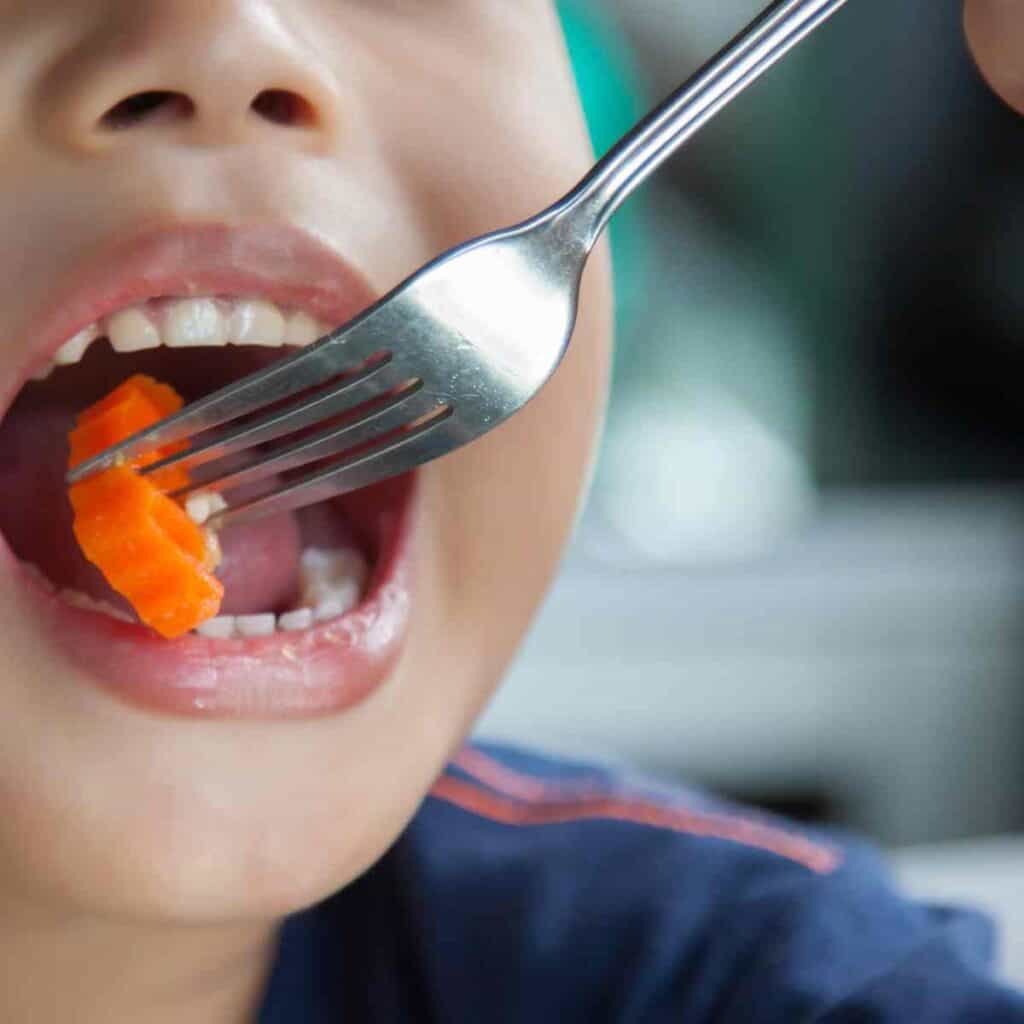Buying a quarter cow, half cow, or whole cow is a great investment for your family’s health AND your wallet. But it can also be quite overwhelming! My family has been buying cows directly from local farms for a few years now, so let me answer some of the common questions people have when purchasing their first cow.
Where Do You Purchase a Half Cow?
To purchase a half cow, you’ll need to find local farmers. You might meet them in your church, at your child’s school, in the community, or you might have to ask around at your local farmer’s market. Just keep asking, and someone will be able to point you in the right direction!
It is wise to look for a smaller farm that follows more natural farming practices. For example, you’ll want a farm that lets the cattle graze freely as much as possible. You’ll also want a farmer who attempts to do fully grass-fed AND grass-finished, natural beef.
However, it is important to remember that if there are particularly hot and dry seasons, the farmer may be forced to supplement with some hay or feed. As long as you find a farmer you trust, you won’t have to worry that they’ve raised the cow well.

How Much Does it Cost to Buy a Cow?
The cost of buying a half cow can vary greatly by farm. You can expect to pay somewhere between $5-$9 per pound of hanging weight. If the cow is grass-fed, grain-finished, the cost will likely be lower. If the cow is grass-fed AND grain-finished, expect it to be a little more.
What does hanging weight mean? Hanging weight is the weight of the cow AFTER the butcher removes the hide, hooves, head, and internal organs. The farmer won’t be able to tell you a hanging weight until after taking the cow to the butcher. So, you will likely have to be prepared to pay within an estimated price range depending on that final number.

Are There Any Other Costs to Consider?
Every farm handles the costs differently, but I’ll use our most recent cow purchase as an example. Recently, we purchased a whole cow from a family in our homeschool co-op. They quoted us $6 per pound of hanging weight paid to the farmer PLUS a $50 slaughter fee and a $1.10 per pound of hanging weight fee paid to the butcher.
They also required a deposit of $700 to be paid a few months prior to the slaughter date. This deposit was subtracted from the final fee that we owed the farmer.
So What Can I Expect to Pay?
Hanging weight can vary greatly depending on the age and breed of the cow. The farmer will likely offer you an estimate before you make a deposit. Our most recent cow was on the smaller side, coming in at only 337 pounds of hanging weight.
Farmer Fee: $6 per pound x 337 lbs = $1322 (deposit of $700 required in advance of slaughter)
Butcher Fee: $1.10 per pound x 337 = $370.70 (plus $29.80 tax)
Slaughter Fee to Butcher: $50
Total Cost: $2,927.50

Is Buying a Half Cow or Whole Cow Really a Money-Saver?
If you just quickly glance at the math, you may come up with roughly $7.10 per pound, but not so fast! While it’s true that $7ish per pound may not be a great bargain for ground beef, let’s remember that you also get the OTHER cuts of meat for the same price per pound… steaks, roasts, and more! Plus, many butchers will give you the tallow, bones, and organ meat at no additional cost. Now, THAT’S a bargain!
And just in case you aren’t aware of the many benefits of eating organ meat, I’ll refer you to the Weston A. Price Foundation for more information.
And if you aren’t familiar with the many benefits of bone broth and how to make it, check out this article.

How Much Meat Will I Actually Get?
To help you visualize exactly what a 337 pound cow might look like in your freezer, here is a breakdown of what we brought home.
- Ribsteaks (1.5 inches thick) – 15
- T-Bone Steaks (1.5 inches thick) – 14
- Sirloin Steaks (1.5 inches thick) – 10
- Ground Hamburger- 57 lbs
- Rump Roasts- 2
- Loin Roasts- 4
- Chuck Roasts- 9
- Shoulder Roasts- 2
- Soup Bones- 6 packs (could have gotten more, but that’s all I could store)
- Ground Organ Packs (*see note below) – 6 lbs
*There were other cuts of meat available like stew meat or short ribs, but we choose to turn those into hamburger instead.
*For the ground organ packs… I request heart, liver, tongue, and kidney be mixed together, ground, and packaged in one pound packs. Later, I freeze these in mini muffin tin portions to add to my taco meat, spaghetti meat, etc. You can see me holding one of the frozen organ cubes in the picture above.
Other Tips for Buying a Half Cow or Whole Cow

- Before the cow is butchered, you’ll have the opportunity to talk to the butcher. Be sure communicate special requests clearly!
- Be sure to take more coolers than you think you’ll need when you go to pick up from the butcher. You may even want to borrow some coolers from a friend.
- Have a freezer organization plan. We use plastic dishpans and storage boxes within the deep freezer to organize our cuts of meat. An organized plan helps you use the meat you’ve purchased efficiently.
- If you’ve never had a grass-fed, grass-finished cow, be aware that it tastes different than a grain-finished cow. You may want to find a way to taste fully grass-fed beef before investing in a whole cow.
- Having a freezer full of meat means you can often pull together a last-minute meal even when you haven’t planned ahead. Everyone knows that eating at home saves a ton of money, so investing in a whole cow helps the budget by keeping you out of restaurants!
I hope this info helps de-mystify the process of buying a whole cow. Now, start asking around to find your best local options!




